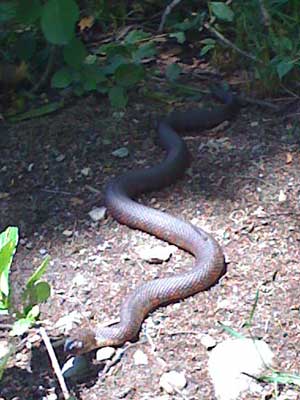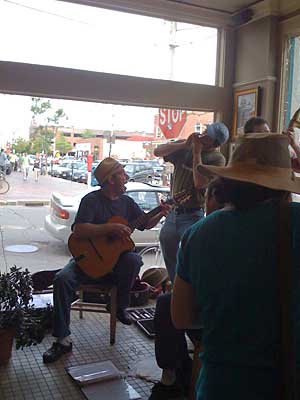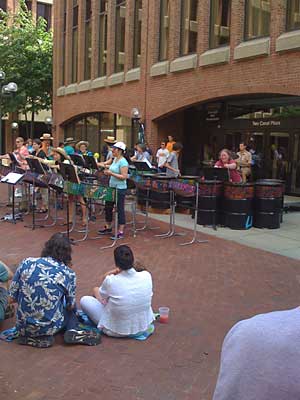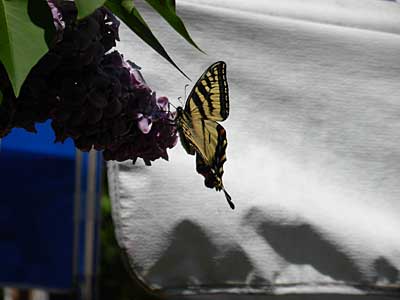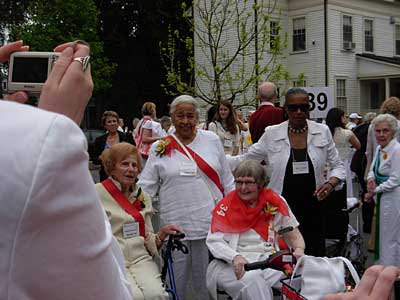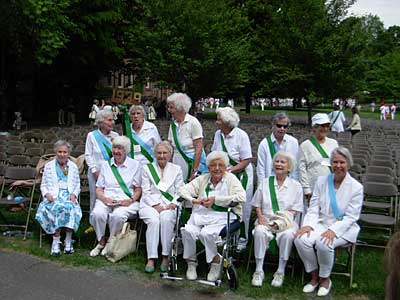We went in to Portland for the Old Port Festival street fair today.
Our first stop was Artist and Craftsman Supply company. Back in January (!) we had been in there and asked them to get some small brayers that I like for indexing stamp mounts. We had almost despaired of ever getting them, but on Wednesday I got a phone call saying the order had finally come in. I said I couldn’t get there to pick them up until the weekend, but maybe we’d come to Portland to get them and see the show at the Portland Art Museum which was closing today. So sure enough, I have my brayers and some x-acto blades and a set of three line cutters for eraser carving, whenever I do more of that.
There was lots of traffic going into Portland (the art supply place is kind of on the outskirts of downtown) and when I hit the real downtown area I turned right, away from Old Port, and looked for on street parking. We parked about two blocks past the music venue One Longfellow Square, which is to say about four blocks away from the art museum, which is itself probably a mile from Old Port.
The museum has been displaying, through today, a biennial show of contemporary art. The first thing you see, in the big multi-story main lobby, is a piece called “Hermitage”. It’s a two-story backwoods cabin, plus an outhouse! The sign says “No more than five people in the Hermitage at one time, please.” There’s a sink, no running water but at least a place to wash the dishes if you pump some water (pump not included). I noticed much later that the sink drains to a pipe that goes through the wall and ends an inch outside the building. The place is fully furnished, or as fully as a backwoods cabin should be, with basic kitchen utensils, a table for eating and reading and writing and playing solitaire, a wood stove with a clothesline above it with a sock hanging to dry, maps and things tacked to the wall, a journal on a writing table; upstairs, a bed and another writing table, a little cupola on top with another window above the second floor ceiling, an upstairs porch (I thought it was a balcony, but it doesn’t jut out beyond the first floor, rather the second floor interior is smaller than the first, maybe ten by twelve feet instead of twelve by twelve.) The journal notes that the occupant saw a skunk near the outhouse yesterday – maybe the two stinks are want to be together. The outhouse has an electric light, wired from the main building, and lots of pinup pictures and cartoons from Playboy on the wall and door (I guess there’s a difference between a hermitage and a monestary.) There’s a little workbench area outside – if the building is that small, you need to build the workbench outside. In an art museum, I don’t know whether it counts as sculpture, architecture, or an installation. It seemed to say a lot about materialism, what you really need to have, what you can do without, that kind of thing. Here’s what the museum’s web site said about that piece:
On entering the Museum’s Great Hall, visitors encounter a ramshackle structure reminiscent of a hermit’s wooden cabin by Ethan Hayes-Chute. This work has been made from materials scavenged from dumps, woodpiles, recycling centers, landfills, and other overlooked nooks and crannies of southern Maine. Visitors are invited to enter the cabin and voyeuristically examine all of the missing occupant’s belongings.
There were lots of other pieces in the biennial, photography, oil paintings, a big installation made of bricks made of sheetrock, a sonic piece called “Thumper”, like a geodesic sphere with subwoofers and car stereo amplifiers. There was a book for visitor comments at the end of the exhibit. We looked through it, and a guard came over and talked to us about it. He had doodled on the back of several pages, because “sometimes it gets kind of boring here.” One of the comments that we noticed and he also mentioned said, “Well, that was a big steaming pile of art.” As we were leaving I said, “I really liked the Hermitage.” The guard said, “Well tell this fellow, because the artist is his nephew. And the woman over there is the artist’s mother.” So we spoke to those people for a minute or two. Arlene asked, “Where is the Hermitage going from here?” The artist’s mother said, “I’m afraid, behind my garage.”
